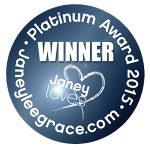Clostridioides
Clostridioides is a genus of bacteria that encompasses various species, some of which can significantly impact human health and cause disease. Here is an overview of how Clostridioides interacts with human health:
- Clostridioides difficile infection (CDI): Clostridioides difficile, formerly known as Clostridium difficile, is a major cause of hospital-acquired diarrhoea and colitis. CDI often occurs after antibiotic use, as these drugs can disrupt the normal gut flora, allowing C. difficile to proliferate and produce toxins that damage the intestinal lining. C. difficile can form resilient spores that get embedded in biofilms, enabling them to survive in the gut ecosystem. These spores contribute to the transmission of the bacteria, emphasising the importance of hygiene and infection control measures.1Mada PK, Alam MU. Clostridioides difficile Infection. [Updated 2023 Jan 23]. In: StatPearls [Internet]. Treasure Island (FL): StatPearls Publishing; 2023 Jan-. Available from: https://www.ncbi.nlm.nih.gov/books/NBK431054/2Sehgal K, Khanna S. Gut microbiome and Clostridioides difficile infection: a closer look at the microscopic interface. Therap Adv Gastroenterol. 2021 Feb 23;14:1756284821994736. doi: 10.1177/1756284821994736.
- Toxin production: C. difficile produces two primary toxins, toxin A and toxin B, responsible for causing symptoms like diarrhoea, abdominal pain, and fever. In severe cases, it can lead to pseudomembranous colitis, toxic megacolon, and even sepsis.3Di Bella S, Ascenzi P, Siarakas S, Petrosillo N, di Masi A. Clostridium difficile Toxins A and B: Insights into Pathogenic Properties and Extraintestinal Effects. Toxins (Basel). 2016 May 3;8(5):134. doi: 10.3390/toxins8050134.4Voth DE, Ballard JD. Clostridium difficile toxins: mechanism of action and role in disease. Clin Microbiol Rev. 2005 Apr;18(2):247-63. doi: 10.1128/CMR.18.2.247-263.2005.
- Recurrent infections: Patients with CDI face a high risk of recurrent infections, which can be challenging to treat. Strategies to prevent recurrence include appropriate antibiotic use, faecal microbiota transplantation (FMT), and the use of certain probiotic foods like kefir as part of a staggered and tapered antibiotic withdrawal regimen.5Song JH, Kim YS. Recurrent Clostridium difficileInfection: Risk Factors, Treatment, and Prevention. Gut Liver. 2019 Jan 15;13(1):16-24. doi: 10.5009/gnl18071.6Madoff SE, Urquiaga M, Alonso CD, Kelly CP. Prevention of recurrent Clostridioides difficile infection: A systematic review of randomized controlled trials. Anaerobe. 2020 Feb;61:102098. doi: 10.1016/j.anaerobe.2019.102098.7Bakken JS. Staggered and tapered antibiotic withdrawal with administration of kefir for recurrent Clostridium difficile infection. Clin Infect Dis. 2014 Sep 15;59(6):858-61. doi: 10.1093/cid/ciu429.
In summary, Clostridioides bacteria have a significant impact on human health, with C. difficile causing severe infections, particularly in healthcare settings. Understanding and addressing the risks associated with C. difficile is crucial for protecting the delicate balance of the gut microbial ecosystem and for preventing the spread of infections.
Where to find Clostridioides in the Chuckling Goat Gut Microbiome Test
You will find your Clostridioides scores in the “Pathogens” report in your Chuckling Goat Gut Microbiome Test results. Guidance on how to work with pathogens like Clostridioides will be featured in your Personal Action Plan. Please note that this information is not intended to be a substitute for professional medical advice, diagnosis, or treatment. Always seek the advice of your GP or other qualified health provider if you have any questions about Clostridioides.
Synonyms: Clostridioides difficile, Clostridium difficile, C. difficile infection, Clostridioides species
Important disclaimer
The Chuckling Goat Gut Microbiome Handbook is an educational resource built to translate complex science into plain English. The information provided on this page is not intended to be a substitute for professional medical advice, diagnosis, or treatment. Always seek the advice of your GP or other qualified health provider with any questions you may have regarding a medical condition. Always check with your GP for interactions with medications/health conditions before changing your diet or starting to take food supplements.
References
- 1Mada PK, Alam MU. Clostridioides difficile Infection. [Updated 2023 Jan 23]. In: StatPearls [Internet]. Treasure Island (FL): StatPearls Publishing; 2023 Jan-. Available from: https://www.ncbi.nlm.nih.gov/books/NBK431054/
- 2Sehgal K, Khanna S. Gut microbiome and Clostridioides difficile infection: a closer look at the microscopic interface. Therap Adv Gastroenterol. 2021 Feb 23;14:1756284821994736. doi: 10.1177/1756284821994736.
- 3Di Bella S, Ascenzi P, Siarakas S, Petrosillo N, di Masi A. Clostridium difficile Toxins A and B: Insights into Pathogenic Properties and Extraintestinal Effects. Toxins (Basel). 2016 May 3;8(5):134. doi: 10.3390/toxins8050134.
- 4Voth DE, Ballard JD. Clostridium difficile toxins: mechanism of action and role in disease. Clin Microbiol Rev. 2005 Apr;18(2):247-63. doi: 10.1128/CMR.18.2.247-263.2005.
- 5Song JH, Kim YS. Recurrent Clostridium difficileInfection: Risk Factors, Treatment, and Prevention. Gut Liver. 2019 Jan 15;13(1):16-24. doi: 10.5009/gnl18071.
- 6Madoff SE, Urquiaga M, Alonso CD, Kelly CP. Prevention of recurrent Clostridioides difficile infection: A systematic review of randomized controlled trials. Anaerobe. 2020 Feb;61:102098. doi: 10.1016/j.anaerobe.2019.102098.
- 7Bakken JS. Staggered and tapered antibiotic withdrawal with administration of kefir for recurrent Clostridium difficile infection. Clin Infect Dis. 2014 Sep 15;59(6):858-61. doi: 10.1093/cid/ciu429.
















